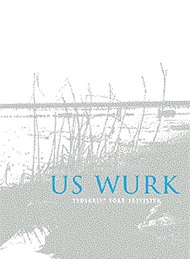y-nammen tusken flaai- en ferlytsingsnammen
Abstract
Frisian has three types of hypocoristic names, viz. diminutive names, ‘real’ hypocoristics, and, finally, names ending in -/i/ (-<y>), which are the subject of this article.
y-names are bisyllabic trochees, which means that the full form of the names they are associated with must be accommodated by one syllable. Most of the times the stressed syllable of the base name is selected, though there are also instances of the selection of an unstressed syllable. The second syllable, headed by /i/, must have an onset. This means that in case (the stressed syllable of) the base name ends in a long vowel or a diphthong, also the consonant following the long vocalic sequence must be incorporated into the y-name.
y-names occupy a position in between diminutive names and ‘real’ hypocoristics, that is, they share properties with both types of names (and differ from both types as well). Some examples of this are provided here. All three types can be used as men’s and women’s names. Whereas a diminutive name consists of two or more syllables and a ‘real’ hypocoristic of one or two, an y-name is strictly bisyllabic. Both ‘real’ hypocoristics and y-names do not allow for nasalised vowels, as opposed to diminutive names. Both diminutive names and y-names allow for consonant clusters, which ‘real’ hypocoristics do not.
The formation of y-names is likely to be a borrowed process, inspired by the same type of names in English and Dutch. The use of y-names reached its climax in the middle of the twentieth century and has rapidly decreased in scope since, to the extent that it has almost completely fallen into abeyance.

